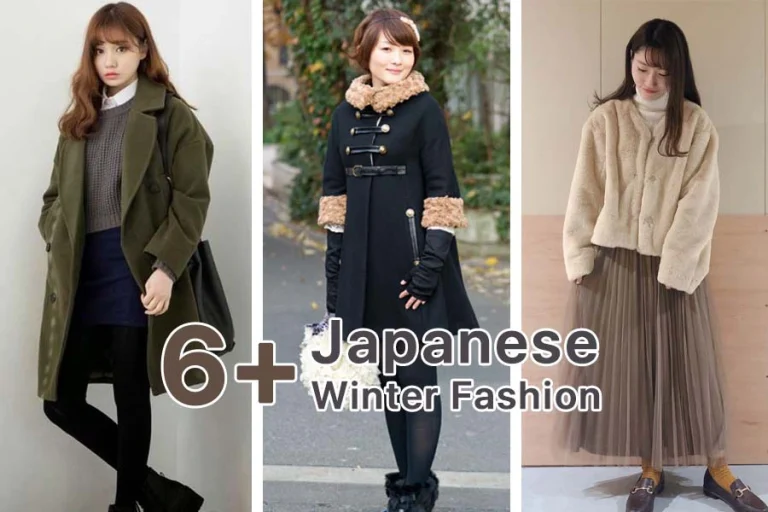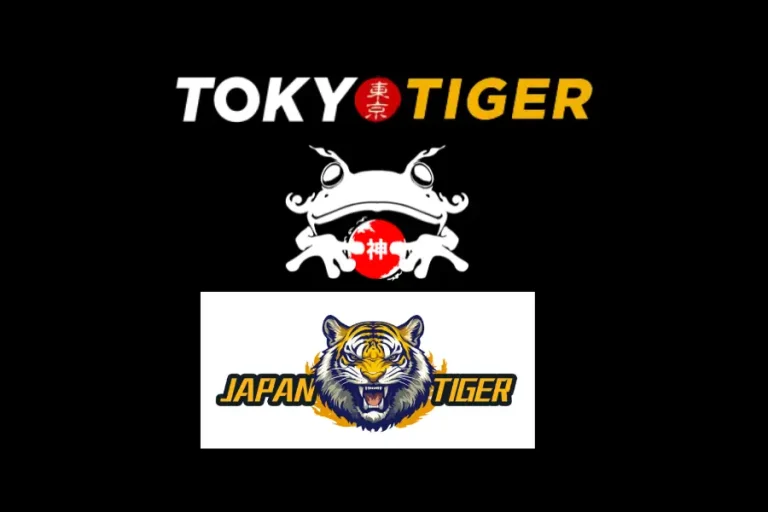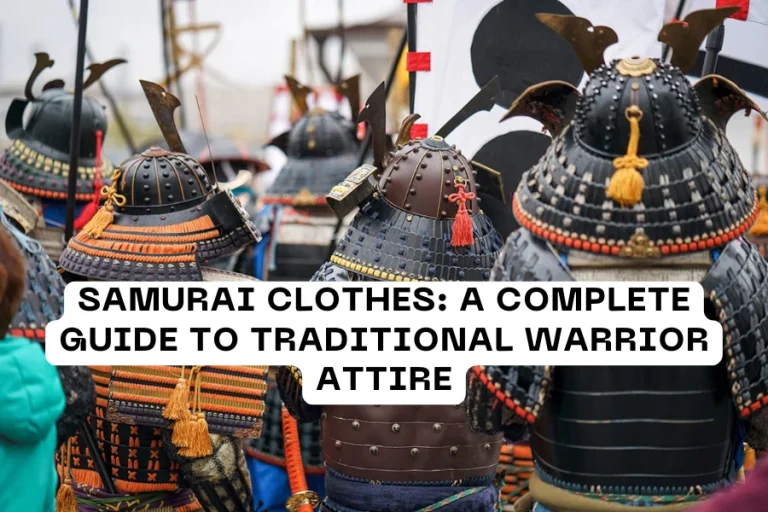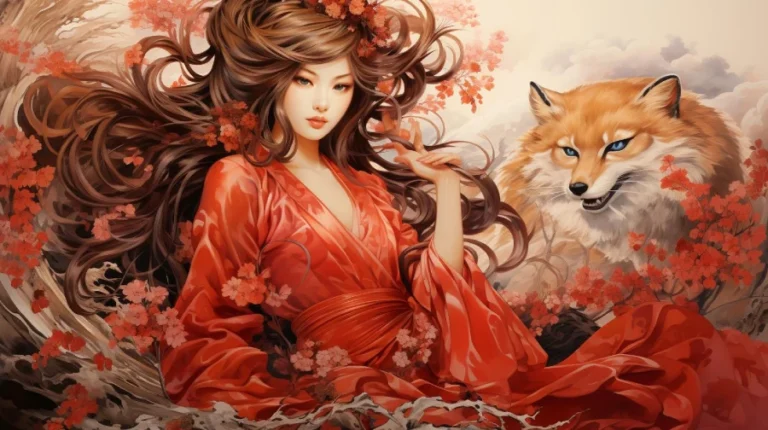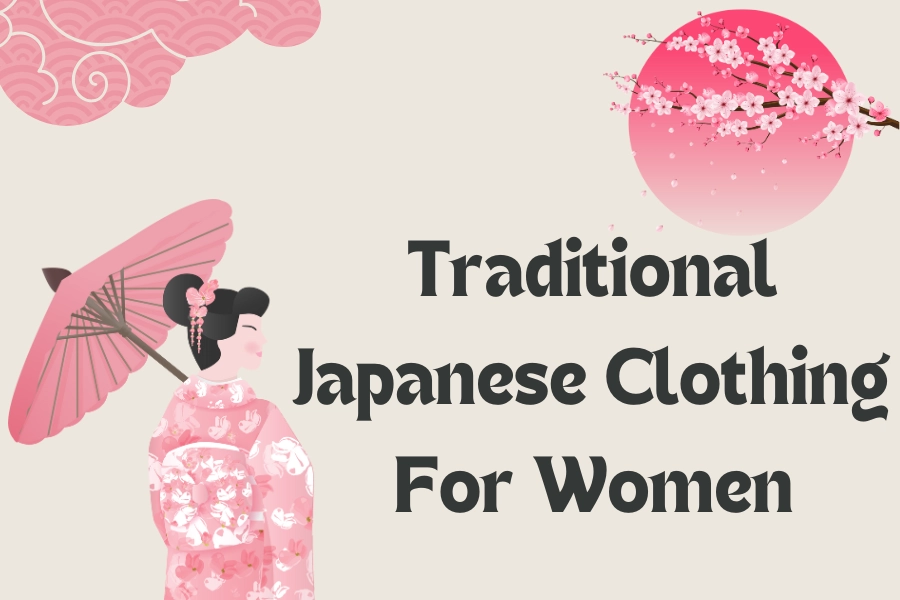
If you love Japanese culture, you probably can not help but mention traditional Japanese clothing. In the past, clothing could show the social status of the wearer, or the season and occasion. However, nowadays, no matter where you come from, what class you belong to, you can still wear traditional Japanese women’s clothing (if you are a woman). And this is also the modern era, so you have the right to mix traditional Japanese women’s clothing with other modern fashion items. However, perhaps many of you do not have ideas for mixing clothes, so below are 7 ways to mix traditional Japanese clothing for women with other modern fashion items.
1. Kimono
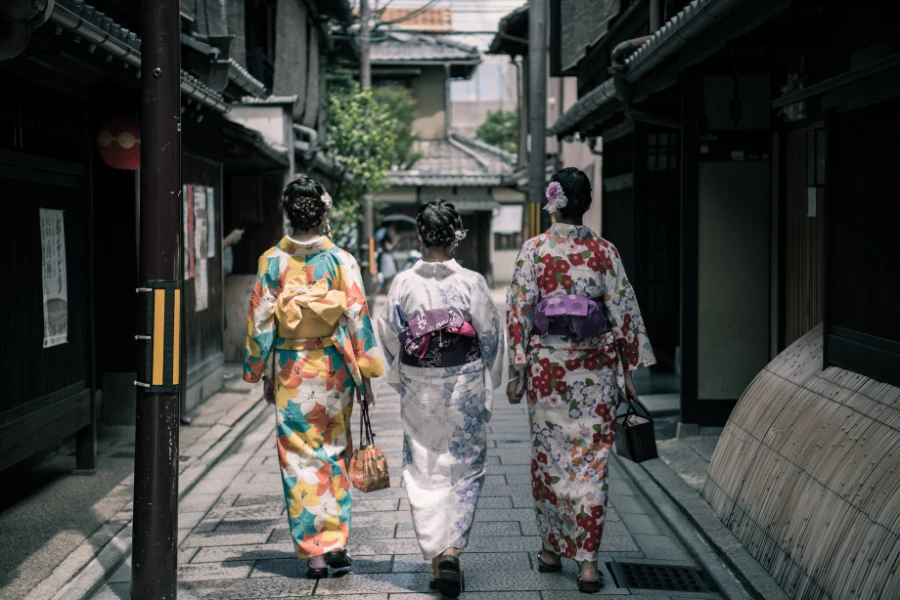
When it comes to traditional Japanese clothing for `women, kimono is probably the first clothing that comes to our mind. The word “kimono”, which combines ki = wear, mono = thing, literally means “thing to wear” in Japanese.
The choice of kimono, its pattern, and color can convey various messages about the wearer’s age, marital status, and the formality of the occasion. For instance, younger women typically wear brighter colors and bold patterns, while older women wear more subdued designs.
While kimonos were once everyday wear in Japan, today they are primarily worn for special occasions such as weddings, tea ceremonies, and other formal events. However, there has been a recent revival of interest in kimono culture. Some young people have found new ways to incorporate kimono elements into contemporary fashion.
2. Yukata
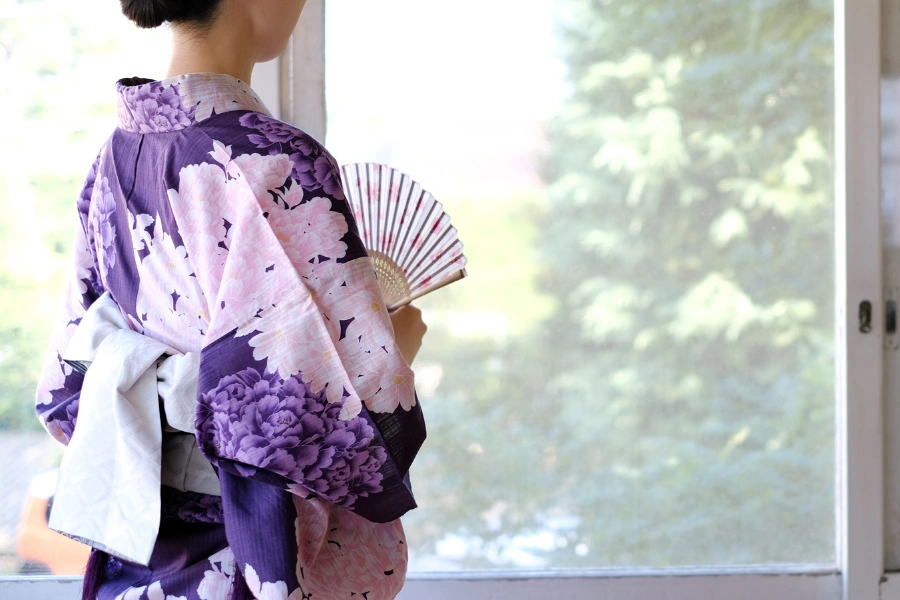
A yukata is a kind of lightweight, casual summer kimono not only for women but also a traditional Japanese clothing for men. Origins of yukata in bathhouse culture during the Edo period and it means “bathing cloth”. It is made of cotton and worn in Japan during warm weather and festive occasions. Yukata was originally a bathing garment worn after using hot springs or public bathhouses. Now, it became a popular summer clothing associated with festivals, fireworks displays, and summer social gatherings.
3. Furisode
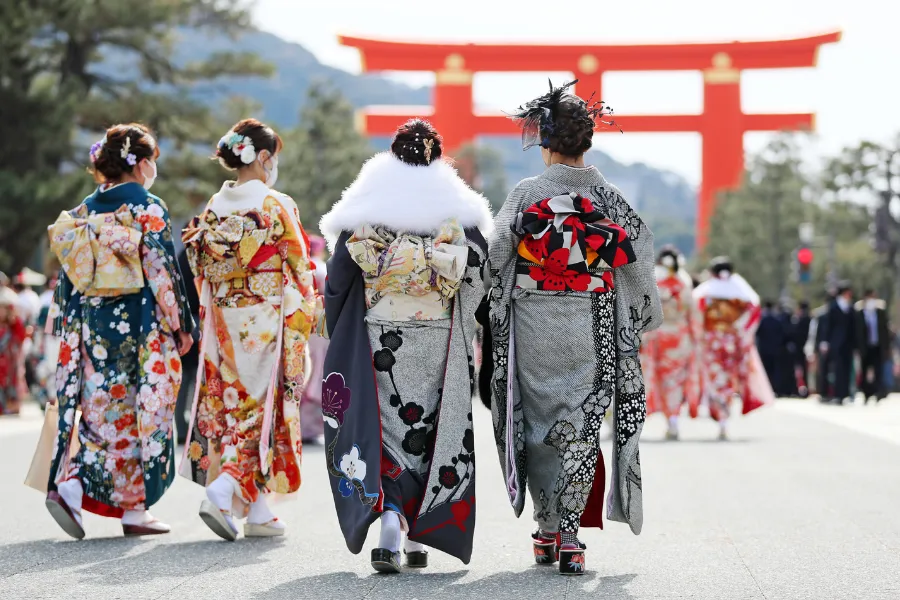
A furisode is the most formal style of kimono worn by unmarried women in Japan.It is special thanks to its exceptionally long sleeves which can reach nearly to the floor. The name “furisode” means “swinging sleeves,” because these sleeves can measure 114 to 124 centimeters in length. This garment is traditionally worn for significant ceremonial occasions such as Coming of Age Day (Seijin no Hi), formal wedding attendances, and other important celebrations.
4. Hakama

Hakama is a traditional Japanese garment that resembles wide-legged, pleated trousers or a divided skirt. It has deep pleats and falls straight from the waist to around the ankles. The traditional design includes seven deep pleats, five in the front and two in the back. In the past, hakama were worn primarily by men, particularly samurai. Now, they are now worn by both men and women in various contexts. You will still see hakama worn during martial arts practice, tea ceremonies, and by Shinto shrine maidens.
In modern fashion, hakama has been innovated and can be combined with many other outfits. For instance, you might see wide-legged pants with pleating details that bring hakama’s distinctive shape. Moreover, if you want to have a samurai style, you could mix hakama with haori as outer top and shirt as inner layer.
5. Hanten
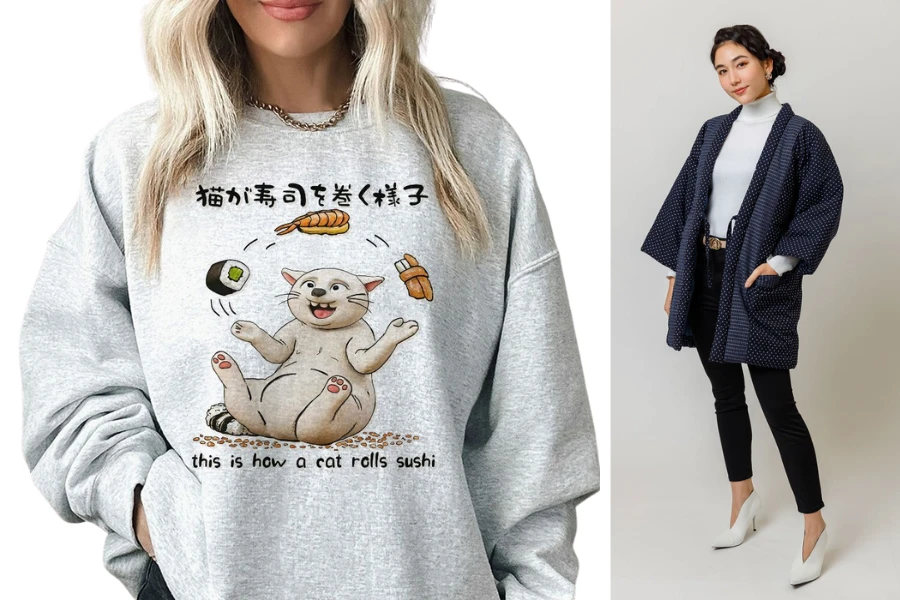
Hanten is a traditional short, padded Japanese winter jacket. It was historically worn by merchants and common people during the Edo period. The traditional design features a simple crossed front that ties closed, straight sleeves, and a length that typically hits around the hips. The jacket is usually tied closed with a sash or ties at the front, so it is easy to put on and take off. The outer fabric often has subtle patterns or solid colors, with indigo blue being the most traditional and popular choice. This traditional Japanese clothing for women and men was made with cotton padding between layers of fabric.
Now, Hanten has been combined with many modern fashion items, especially Japanese winter fashion. In the winter, a hanten paired with a sweatshirt or hoodies not only keeps you warm when going out in the Japanese winter. But it can also be worn comfortably at home to relax.
6. Maekake
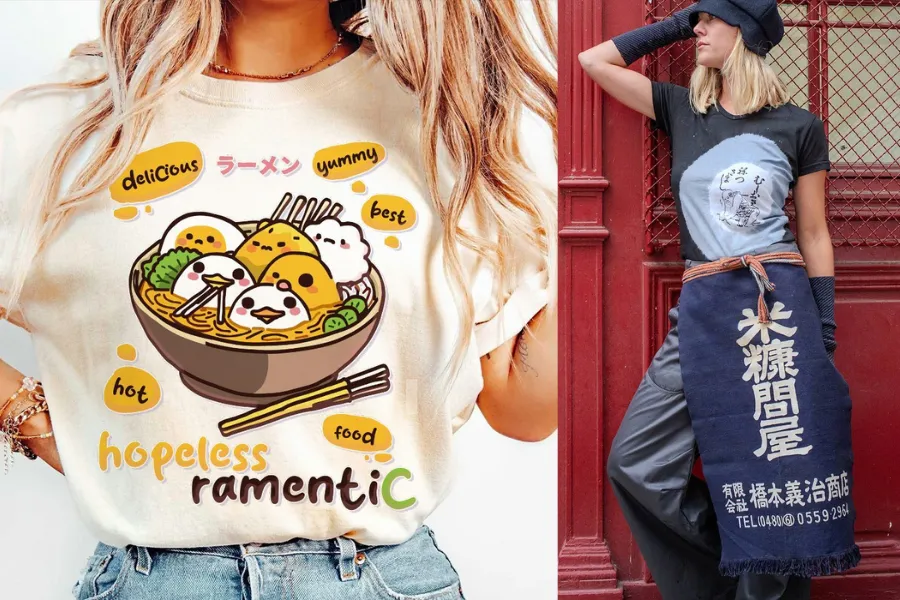
The traditional Japanese Maekake is an apron historically worn by craftsmen and merchants during the Edo period. The maekake is different from Western-style aprons. It is not just as a protective garment but also as a form of workplace identity and branding. These aprons are typically made from sturdy cotton or canvas and are characterized by their distinctive design. Moreover, they are characterized by their distinctive design, which often features the name or logo of a business or workshop prominently displayed on the front.
These days, Maekake has found its way into modern fashion when paired with casual wear. Therefore, fashionistas have started trying different ways with the Maekake to have an unique Japanese casual style look. For example, some people wear the Maekake with jeans and a T-shirt. You can pair it with a Kami Crew’s ramen collection to make the whole outfit have a food theme. Also, the versatility of the Maekake allows it to be worn as a functional piece and as a fashion accessory.
7. Happi Coat

Happi coats are traditional Japanese cotton jackets that originated as workers’ uniforms in the Edo period. These short coats have a simple, boxy silhouette with straight sleeves, reaching just below the waist. Like its name, Happi Coats literally means one thing: they’re off to a festival. Moreover, they displayed family crests, shop logos, or festival symbols on the back, which represent the wearer’s connection.
Happi coats are very easy to mix and match nowadays. This outfit is suitable for wearing at home or hanging out. Besides you match it with that simple shirt or with any funny style tops. With pants, Happi coats work particularly well with slim-fitting bottoms and simple jeans with Kami Crew shirts for an energetic look. Some style them open over dresses or jumpsuits, treating this traditional Japanese clothing for women as a casual jacket.
A Word From Kami Crew
Traditional Japanese clothing for women seems to be a huge cultural legacy. And in fashion, traditional Japanese clothing continues its elegant evolution through thoughtful integration into the modern wardrobe. In the intersection of tradition and innovation, we find not only beautiful styles but also a vibrant connection to Japan’s rich cultural heritage. Through this article, Kami Crew offers a few suggestions for how you can wear traditional clothing with modern pieces. After reading this blog, you probably create a harmonious and unique own look.
